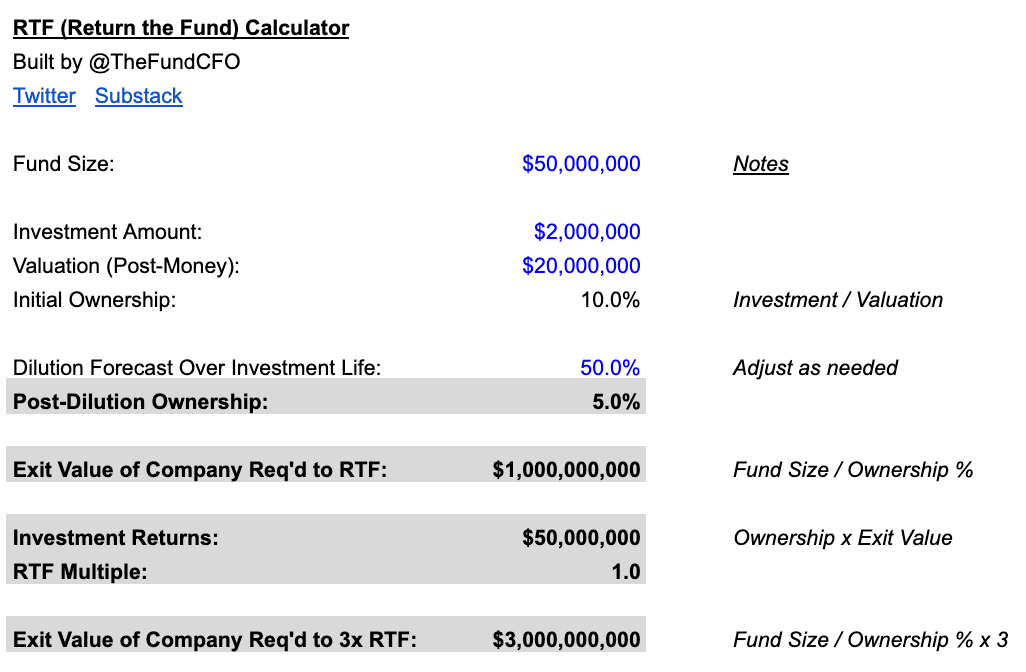#272: Unicorn Data by VC Fund
Ilya Strebulaev’s (Stanford) latest research on venture capital hit rates offers a rare look at which firms are best at spotting unicorns (companies that become worth >$1B) early. The chart ranks funds by the share of their early-stage investments since 2020 that have gone on to become unicorns. Note that this is a recent heat index and doesn’t account for nuances such as team turnover, DPI, etc. - tbd if this persists or performs going forward! Anyways, at the top of the list:
Firebolt Ventures — 10% (7 unicorns from 70 investments)
Thrive Capital — 9% (6/67)
Paradigm, Coatue, Kleiner Perkins — ~7% each
And then the scale players:
Andreessen Horowitz — 28 unicorns from 635 early bets (4%)
Sequoia — 22 unicorns from 580 (4%)
🔦 Sponsor Spotlight: Visible
No more chasing founders or wrangling spreadsheets. Finance teams at top VC firms use Visible’s AI-driven platform to streamline portfolio monitoring, stay audit-ready, and impress LPs. Find out why our customers love us today.
Picking Skill vs. Scale
A 3% hit rate means you need ~33 bets to expect one unicorn. That math looks great if you’re a small fund writing 30–40 checks. But it breaks down for large funds.
Small Fund Example
Fund size: $50m
Investment: $2m check at a $20m post-money (10% entry)
Dilution: 50% over company life → 5% final ownership
Exit: $1b outcome
Result: 5% × $1b = $50m → 1x Return the Fund (RTF). $10b outcome → 10x RTF.
👉 For a $50m fund, a single unicorn can return the whole fund. Conviction works if you pick right!
Large Fund Example
Fund size: $1b
Investment: $40m check at $400m post-money (10% entry)
Dilution: 50% → 5% final ownership
Exit: $1b outcome
Result: 5% × $1b = $50m return → just 5% of the fund. $10b outcome → 0.5x RTF
👉 For big funds, it’s hard to RTF! They need to write bigger checks in the hottest deals that can grow to $10b+ outcomes.
Why This Matters
Small funds → One unicorn can return the fund.
Large funds → Unicorns don’t get it done, decacorns ($10b+ outcomes) need to be in play.
Hit rate alone doesn’t tell the story. The same 3% looks very different depending on whether you’re managing $50m vs. a $1b+ fund!
Closing Thought
In venture, excellence isn’t just about picking unicorns—it’s about whether those unicorns actually move the needle for your fund.
At 3% hit rate, you’re elite.
For small funds, that’s generally enough to outperform.
For large funds, you need to get enough capital to work and have larger outcomes.
Knowing which game you’re playing—and running the math first—is the edge.
📊 Behind the Paywall:
How Can This Deal RTF?
Every venture fund manager we know wants to deliver superior performance. Before investing in any deal, a VC should ask:
How can this deal Return the Fund (RTF)?
Or 2x, 3x RTF?
What assumptions do I need to believe for that to happen?
We built a lightweight RTF Calculator that helps VCs pressure-test new opportunities. Plug in your fund size, ownership, and dilution assumptions, and instantly see what kind of exit you need to RTF.
Example: For a $50m fund writing a $2m check at a $20m post-money, with 50% dilution over time, you’d need a $1b exit just to RTF.
Paid subscribers can download the calculator and customize it for their own fund strategy.
Keep reading with a 7-day free trial
Subscribe to @TheFundCFO Newsletter to keep reading this post and get 7 days of free access to the full post archives.



